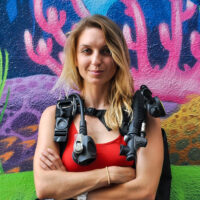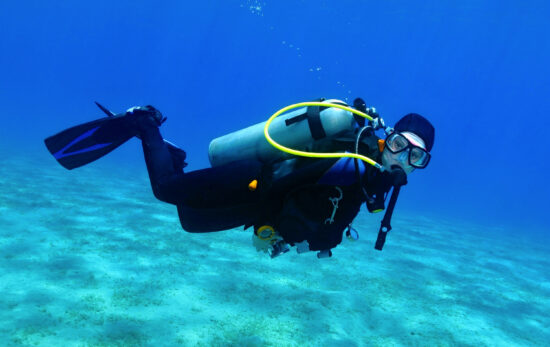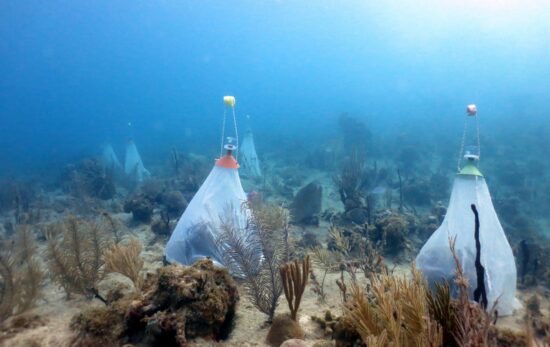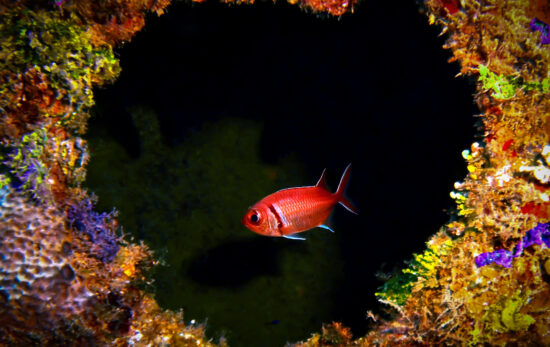In the fall of 2014, I stood in the shallow end of a crystal blue saltwater pool, a tank on my back and regulator in hand, ready to take my first breath underwater. Excitingly, the blue pool paled compared to the turquoise waters off the coast of South Caicos, mere steps away. That bright blue water, and the animals below the surface, were why I had left Iowa to get scuba certified in the Caribbean. I was a college student in the landlocked Midwest and am passionate about protecting the environment, so I leaped at an opportunity to take a semester abroad in a program focused on marine conservation. I had looked forward to this moment for almost a year, and finally, I was getting scuba certified in the Caribbean and developing skills to protect the ocean.
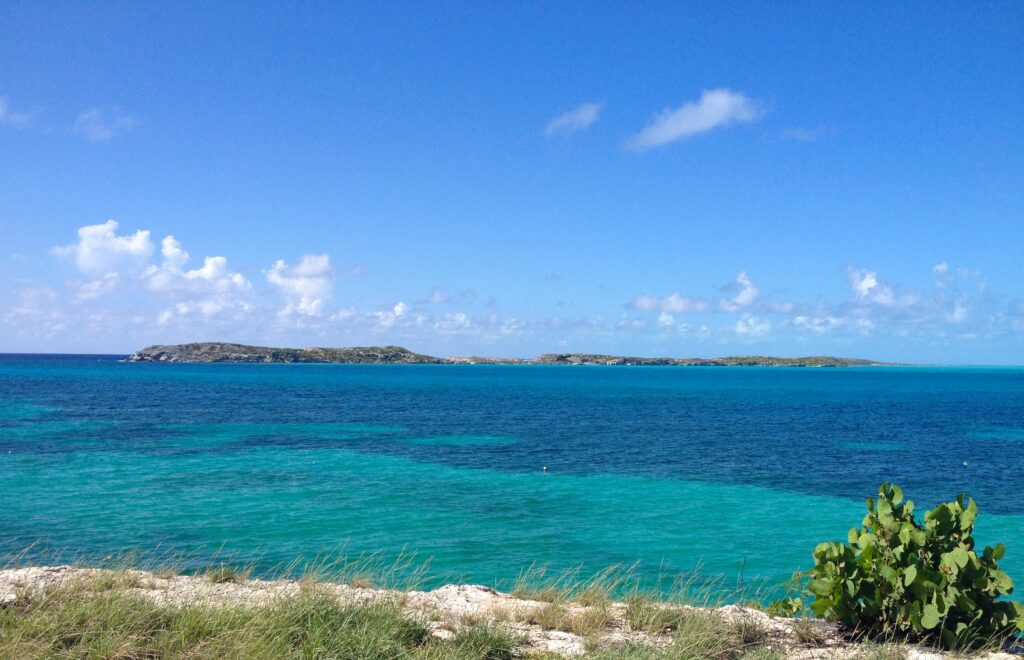
Where It All Began
I was born in Hawaii and grew up swimming with bottle-nose dolphins and green sea turtles, so being in the water was natural to me. When I was twelve, I referred to The Monterey Bay Aquarium as my Disney World. So, standing in the shallow end, I felt confident and excited. I read and highlighted the Open Water Manual exhaustively in the preceding months. The previous week, I sat sweating in an un-airconditioned open-aired classroom watching the PADI training videos with five other students. We came from different backgrounds but were together to get scuba certified in the Caribbean to complete marine research. It was thrilling.
On this day, our instructor briefed us for our first Confined Water Dive. Standing waist-deep in water, we placed our hands on our inflator hoses, deflating our BCDS and sinking beneath the crystal surface. Somewhat instinctively and somewhat hesitantly, I inhaled. Immediately, I noticed the difference between the air coming through the hose and the humid Caribbean breeze. This filtered air was drier, and it took me by surprise. I took one slow deep breath and then another slightly quicker one.
Although I consciously knew that I was receiving air and oxygen, I began to panic. A small voice in my head grew louder, fearing that I was suffocating, even though I knew it was not true. Finally, after a few breaths, I burst back up through the surface. Trying to hide my fear, I took out my regulator and faked a cough so the dive master who followed me would not know I had just panicked. But he knew what was happening and gave me the space to collect myself.
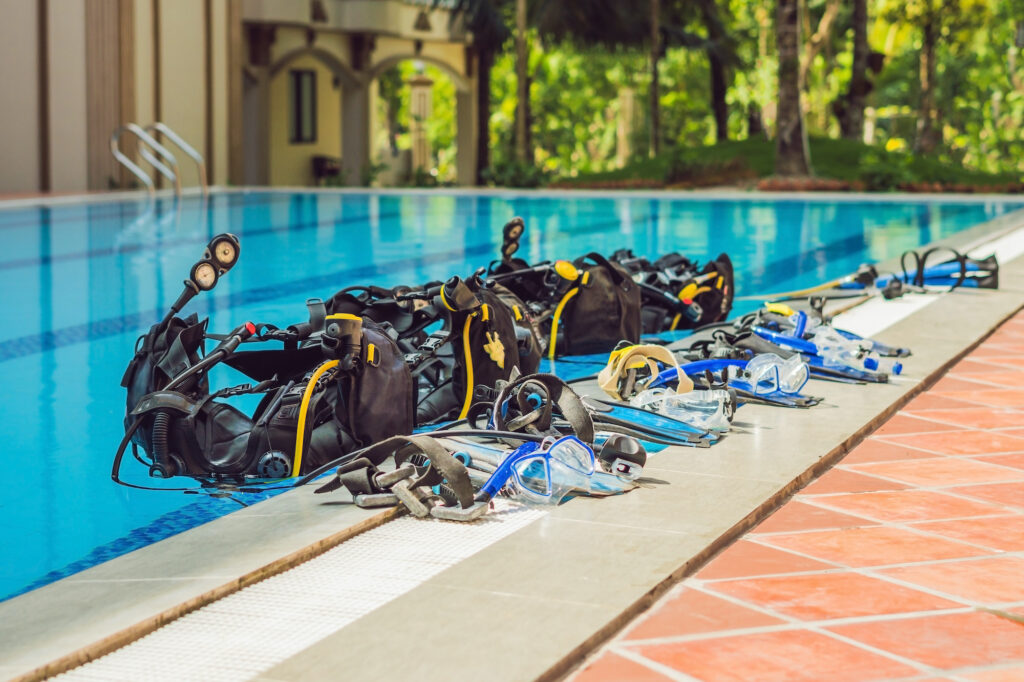
Overcoming My Fear
I had an in-depth tug-of-war inside my head in approximately seven seconds. Consciously, I knew that the regulator was delivering air. I knew I could stay underwater and breathe. Below me, I saw proof of this, bubbles rising to the surface as my new friends, still below, successfully did that. But it had not felt like it. My instincts had pushed me back to the surface, and for a split second, I questioned whether I would complete my scuba certification in the Caribbean.
Quickly, other instincts kicked it. I would not let myself quit. This episode would not be how the story ended. So, with resolve, I pushed the regulator back into my mouth, raised my inflator hose, and sank back down to the pool floor. It didn’t feel like a choice, but a necessity.
“Inhale,” I thought as I sank to the shallow bottom. The dry air I was breathing still felt different, unlike any air I had inhaled my entire life. “You are getting air. Exhale. You are safe.” A small voice argued back in fear, but I stayed put, calming myself and focusing on my breath. “Inhale. Exhale.” Eventually, it became clear that the tank on my back was indeed successfully supplying me with air.
My scuba kit was keeping me alive while I was completely submerged underwater, just like the training had taught. I stopped noticing how the air felt different. I focused on completing the first set of skills, fist-bumping my instructor, and chasing plastic torpedoes across the pool. Later that night, in a bunk bed draped with mosquito netting, I felt proud that I had overcome my fear. And I looked forward to what doors this new skill would offer me.
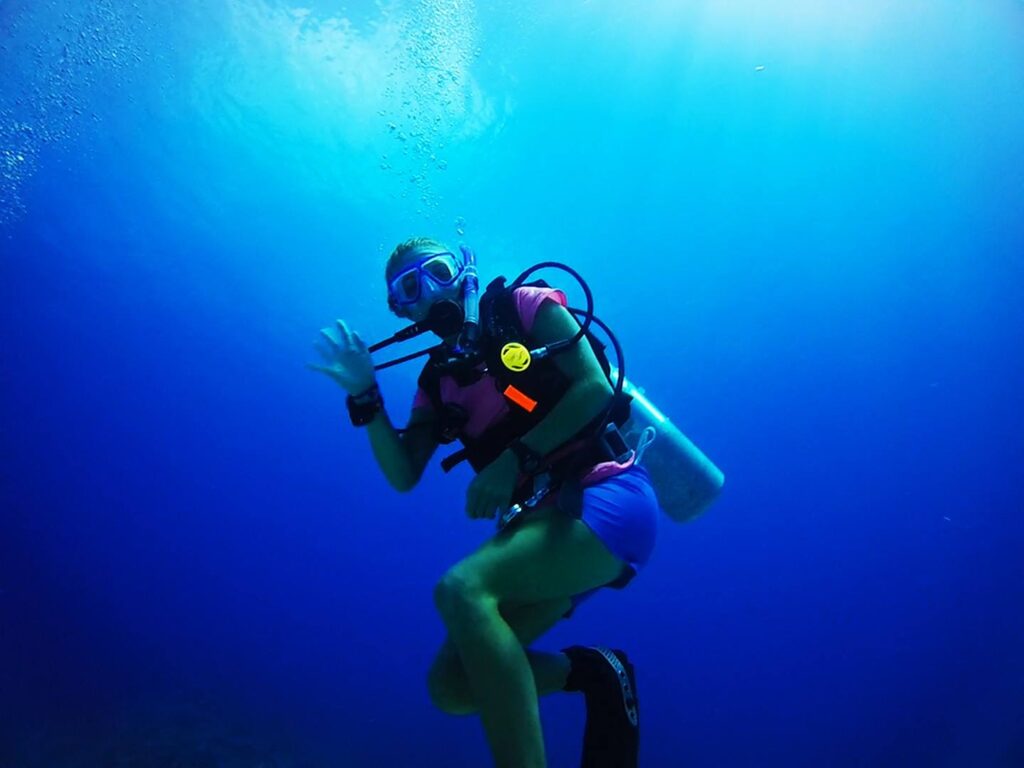
Becoming a PADI Pro and Helping Others
I didn’t tell anyone I had panicked when I first breathed underwater. At least, not until a little over two years later, as I stood across from another Open Water student in the shallow end of a pool. But this time, it was my Open Water student. I became a certified PADI scuba instructor in November 2016, motivated to give others the ability to express their passion for the ocean the way that I now could.
After seeing one of my first students nervous about sticking their heads underwater, I realized panicking had been a blessing. Because of the experience, I confidently tell my students that I panicked while taking my very first breaths underwater. And I reassured them that if I could get through it and become a professional, they could do it too.
